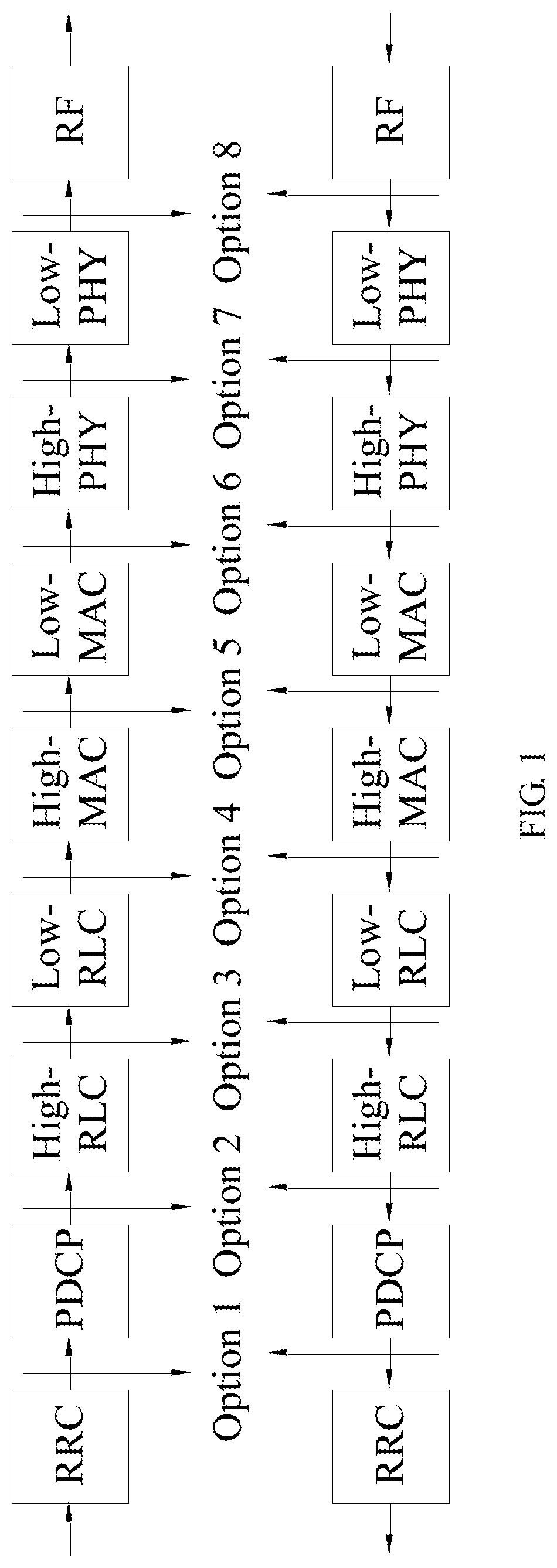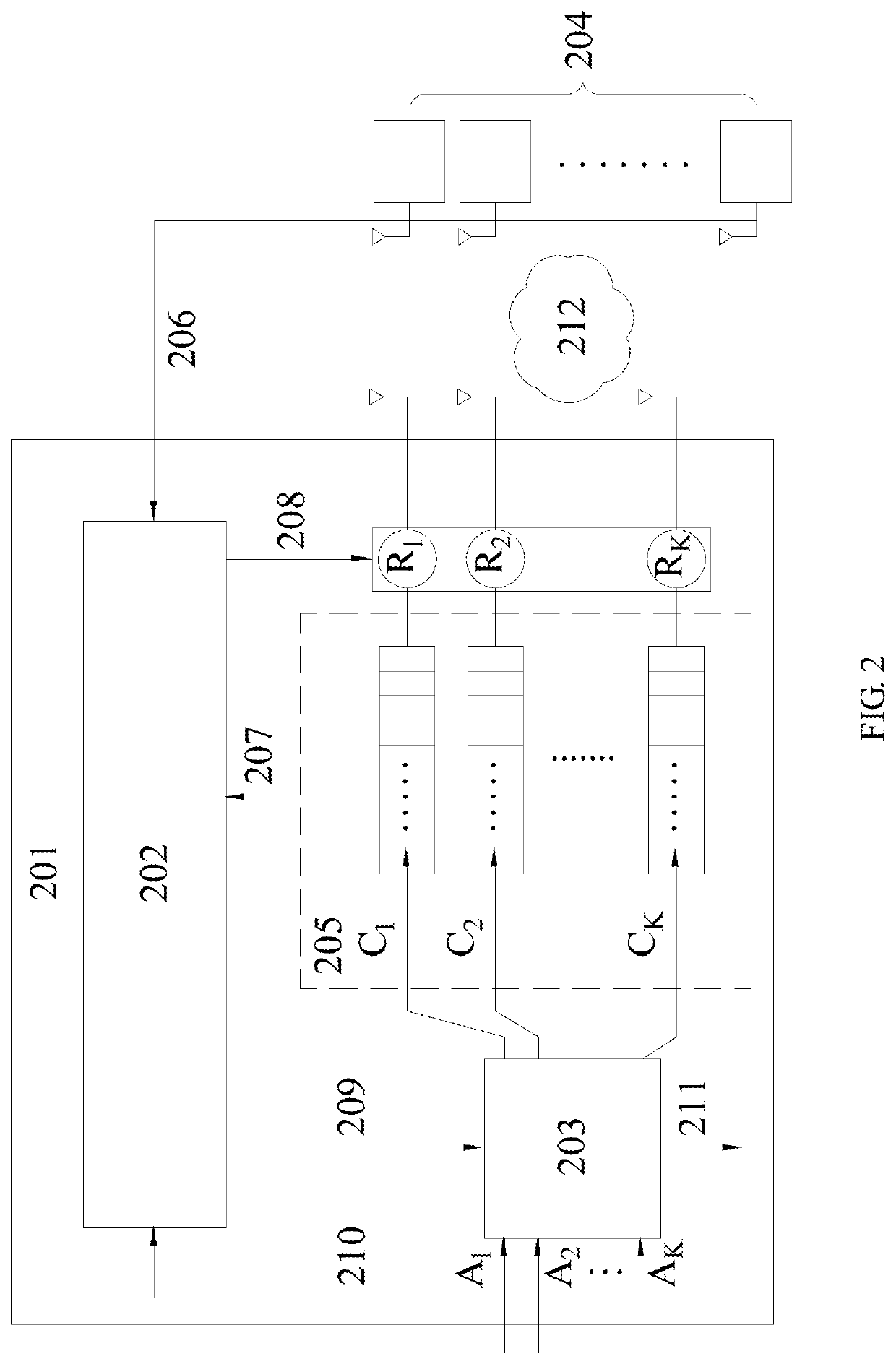Communication system of quality of experience oriented cross-layer admission control and beam allocation for functional-split wireless fronthaul communications
a technology of cross-layer admission control and communication system, applied in the field of communication system, can solve the problems of short transmission distance, limited diffraction ability of 5g signals, and inability to bypass moving or non-moving obstacles
- Summary
- Abstract
- Description
- Claims
- Application Information
AI Technical Summary
Benefits of technology
Problems solved by technology
Method used
Image
Examples
first embodiment
[0041]The first embodiment relates to a communication system of quality of experience oriented cross-layer admission control and beam allocation for functional-split wireless fronthaul communications for a cloud radio access network, which executes the CU-based beam allocation and admission control algorithm (CU-BAACA).
[0042]FIG. 2 depicts the structure of the communication system according to the first embodiment of the present application. FIG. 2 depicts the communication structure of the system in which the central unit CU executes the algorithm. In this structure, High-MAC layer is allocated to the CU end 201 (central unit end 201). Since the entire structure is more central, the CU end 201 has High-MAC for consonantly executing scheduling, managing interference coordination and controlling data admission. Since the algorithm is executed in the central unit CU, the distributed unit end 204 needs to process one-way transmission of the channel state information (CSI) 206 to the ce...
second embodiment
[0073]The second embodiment relates to a communication system of quality of experience oriented cross-layer admission control and beam allocation for functional-split wireless fronthaul communications for a cloud radio access network, which executes the DU-based (distributed unit based) beam allocation and admission control algorithm (DU-BAACA).
[0074]FIG. 4 depicts structure of the system according to the second embodiment of the present application. FIG. 4 depicts structure of the system in which the distributed units DU executes the algorithm. In this structure, High-MAC layer is allocated to the DU end 404 (distributed unit end 404). Therefore, the position where the algorithm is executed is the DU end 404 as well. In the case of executing DU-BAACA by the distributed units, each distributed unit DU would not get information of interference coming from other distributed units, which is the main difference between the DU-BAACA and the CU-BAACA. Therefore, the interference is herein...
PUM
 Login to View More
Login to View More Abstract
Description
Claims
Application Information
 Login to View More
Login to View More - R&D
- Intellectual Property
- Life Sciences
- Materials
- Tech Scout
- Unparalleled Data Quality
- Higher Quality Content
- 60% Fewer Hallucinations
Browse by: Latest US Patents, China's latest patents, Technical Efficacy Thesaurus, Application Domain, Technology Topic, Popular Technical Reports.
© 2025 PatSnap. All rights reserved.Legal|Privacy policy|Modern Slavery Act Transparency Statement|Sitemap|About US| Contact US: help@patsnap.com



